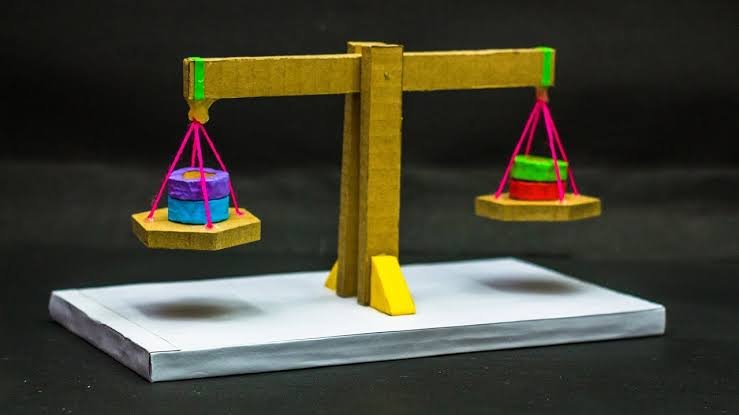
Introduction
Ever wondered how scientists and students weigh objects with such precision? The answer often lies in a classic tool called the triple beam balance. This trusty piece of lab equipment is used in classrooms, labs, and fieldwork to measure mass accurately. Whether you’re a student, a science enthusiast, or just curious, this guide will give you a clear, easy-to-follow understanding of the triple beam balance, how it works, and why it’s still popular despite modern digital scales.
By the end of this post, you’ll know everything from setting up a triple beam balance to taking accurate measurements and understanding what makes it unique. Let’s dive in!
What is a Triple Beam Balance?
A triple beam balance is a mechanical scale used for measuring mass. It’s called a “triple beam” because it has three bars, or beams, each with different measurement increments. Each beam can be adjusted to weigh an object with precise accuracy, usually down to tenths of a gram. Although simple in design, the triple beam balance remains one of the most reliable tools for measuring mass due to its precision and ease of use.
Why Use a Triple Beam Balance?
So, why bother with a triple beam balance when digital scales are so common? Here are a few reasons:
- Accuracy and Reliability: Triple beam balances don’t require batteries and can be just as accurate as electronic scales for many purposes.
- Cost-Effective: They are generally more affordable and require less maintenance.
- Hands-On Learning: For students, using a triple beam balance offers a valuable hands-on experience in understanding mass and measurement.
- Durability: Made of metal, triple beam balances are built to last and can withstand lab conditions.
Parts of a Triple Beam Balance
Understanding the main parts of a triple beam balance will help you use it correctly. Here’s a quick overview:
- Base: The sturdy foundation of the balance, which keeps it stable.
- Pan: The flat area where the object to be weighed is placed.
- Beams: The balance’s three bars, each marked with different units (usually 100g, 10g, and 1g increments).
- Riders: Small sliding weights on each beam that can be adjusted to measure the object’s mass.
- Pointer and Scale: The pointer aligns with a scale at zero when the balance is correctly set.
- Zero Adjustment Knob: Used to set the balance to zero before placing an object on the pan.
How to Use a Triple Beam Balance: Step-by-Step Guide
Let’s go through the process of using a triple beam balance to weigh an object:
- Start with Zeroing: Place the balance on a flat surface. Adjust the zero adjustment knob to align the pointer with the zero mark on the scale. This step ensures accuracy in your measurement.
- Place the Object on the Pan: Gently place the object you want to weigh in the center of the pan to keep the balance stable.
- Move the Riders: Start with the largest beam (usually the 100-gram beam) and slide the rider across the beam until the pointer dips below zero, then move it back to the previous notch.
- Continue with the Smaller Beams: Move the 10-gram rider next, then fine-tune the measurement using the smallest beam (1 gram or smaller).
- Read the Mass: Add up the values from each beam. For example, if the largest beam reads 300g, the middle beam reads 50g, and the smallest beam reads 3.7g, then the object’s mass is 353.7 grams.
- Re-check: Always double-check your readings for accuracy before recording the mass.
Advantages of Using a Triple Beam Balance
The triple beam balance may seem old-fashioned, but it has many benefits:
- Precision: With proper calibration, it provides exact measurements, often down to a fraction of a gram.
- No Power Needed: Unlike digital scales, it doesn’t need batteries or electricity, making it ideal for remote areas.
- Learning Tool: It’s great for educational environments, helping students understand the principles of mass, balance, and measurement.
Triple Beam Balance vs. Digital Scale
| Feature | Triple Beam Balance | Digital Scale |
| Power Requirement | None | Needs batteries or power source |
| Accuracy | High (with careful adjustment) | High (usually automatic) |
| Maintenance | Minimal | Moderate, may need recalibration |
| Cost | Lower than most digital scales | Variable, often higher |
| Usability in Education | Great for hands-on learning | Less interactive |
Common Mistakes and Troubleshooting
Even simple tools like the triple beam balance can be used incorrectly. Here are some common issues and how to solve them:
- Not Zeroing the Balance: Always zero the balance before placing an object on the pan. This step prevents miscalculations.
- Uneven Surface: Make sure the balance is on a stable, flat surface to avoid inaccurate readings.
- Incorrect Beam Placement: If you skip a beam or adjust them out of order, you won’t get an accurate measurement. Always start with the largest beam first.
Care and Maintenance of a Triple Beam Balance
Taking care of your triple beam balance will ensure its longevity and accuracy:
- Store Properly: Keep it covered and stored in a safe place to avoid dust and debris.
- Clean Carefully: Use a soft, dry cloth to wipe it down after each use.
- Avoid Overloading: Exceeding the balance’s maximum weight can lead to damage or inaccurate readings.
- Check for Calibration: Regularly zero the balance before each use to confirm it’s properly calibrated.
Conclusion
The triple beam balance is a classic tool that continues to serve science labs and classrooms around the world. Its accuracy, simplicity, and durability make it a valuable instrument for anyone needing precise measurements without the hassle of electronics. By learning how to use it properly and maintaining it, you’ll get reliable measurements time and time again.
Frequently Asked Questions
1. How accurate is a triple beam balance?
- A triple beam balance can measure with high accuracy, often down to 0.1 grams.
2. Why are there three beams on a triple beam balance?
- The three beams allow for easier, more precise measurements by dividing the weight into different increments (hundreds, tens, and ones).
3. Do I need to calibrate a triple beam balance?
- While it doesn’t require extensive calibration, you should always zero it before each use.
4. Can a triple beam balance measure in kilograms?
- Most triple beam balances measure in grams. For larger masses, you may need a different type of balance.
5. Is a triple beam balance better than a digital scale?
- It depends. For accuracy without electricity and for educational use, a triple beam balance is ideal. For quick, electronic readings, a digital scale might be preferable.
6. Can I use a triple beam balance for liquids?
- Yes, but you’ll need a container, and you must measure the container’s weight first to subtract it from the total.







